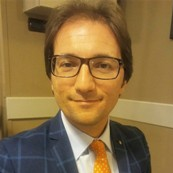Regenerative Medicine: Role of Stem Cells and Innovative Biomaterials 2.0
A special issue of International Journal of Molecular Sciences (ISSN 1422-0067). This special issue belongs to the section "Materials Science".
Deadline for manuscript submissions: closed (31 October 2021) | Viewed by 16921
Special Issue Editors
Interests: regenerative medicine; stem cells; organoids; translational medicine; tumoroids; in-vitro disease models; tissue engineering; precision medicine; dentistry; medicine; oral pathology; organ regeneration
Special Issues, Collections and Topics in MDPI journals
Interests: biomaterials; tissue engineering; bone regeneration; dental implants
Special Issues, Collections and Topics in MDPI journals
Interests: tissue engineering; regenerative medicine; 3D printing; stem cells; exosomes; biomaterials
Special Issues, Collections and Topics in MDPI journals
Special Issue Information
Dear Colleagues,
This Special Issue is a continuation of our previous Special Issue on “Regenerative Medicine: Role of Stem Cells and Innovative Biomaterials”.
Regenerative medicine is a growing area of the medical sciences that has the unique peculiarity of involving both the biological pathways and the clinical applications. Currently, the main actors of tissue regeneration are stem cells and biomaterials: The proper combination of these factors is the key to successfully treating damaged or lost tissues, to promoting tissue formation, and to restoring, at the same time, aesthetics and function. Future regenerative strategies will be aimed at developing innovative biologically-friendly and smart biomaterials, as well as at triggering stem cells towards specific lineages in clinical-grade conditions, also through the use of MSC-derived conditioned medium, exosomes or small molecules. The next approaches should overcome the current biological and clinical limitations and be able to use those autologous factors that can naïvely induce and promote the biological conditions that could guide and improve any kind of tissue regeneration. The biomedical applications of innovative coatings or functionalized surfaces have recently boosted the theranostic use of novel biomaterials. This Special Issue will highlight the most promising applications of tissue engineering in the future diagnostic and therapeutic procedures applied to the medical sciences.
Dr. Marco Tatullo
Prof. Dr. Adriano Piattelli
Prof. Dr. Barbara Zavan
Guest Editors
Manuscript Submission Information
Manuscripts should be submitted online at www.mdpi.com by registering and logging in to this website. Once you are registered, click here to go to the submission form. Manuscripts can be submitted until the deadline. All submissions that pass pre-check are peer-reviewed. Accepted papers will be published continuously in the journal (as soon as accepted) and will be listed together on the special issue website. Research articles, review articles as well as short communications are invited. For planned papers, a title and short abstract (about 100 words) can be sent to the Editorial Office for announcement on this website.
Submitted manuscripts should not have been published previously, nor be under consideration for publication elsewhere (except conference proceedings papers). All manuscripts are thoroughly refereed through a single-blind peer-review process. A guide for authors and other relevant information for submission of manuscripts is available on the Instructions for Authors page. International Journal of Molecular Sciences is an international peer-reviewed open access semimonthly journal published by MDPI.
Please visit the Instructions for Authors page before submitting a manuscript. There is an Article Processing Charge (APC) for publication in this open access journal. For details about the APC please see here. Submitted papers should be well formatted and use good English. Authors may use MDPI's English editing service prior to publication or during author revisions.
Keywords
- Regenerative medicine
- Biomaterials
- Scaffolds
- Stem cells
- Smart materials
- Exosomes
- Functionalized surfaces
- Coatings
- Bioactive surfaces
- Theranostics








